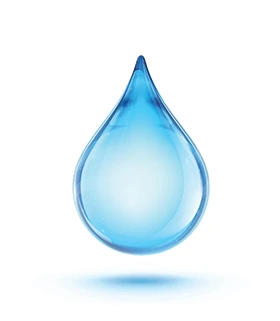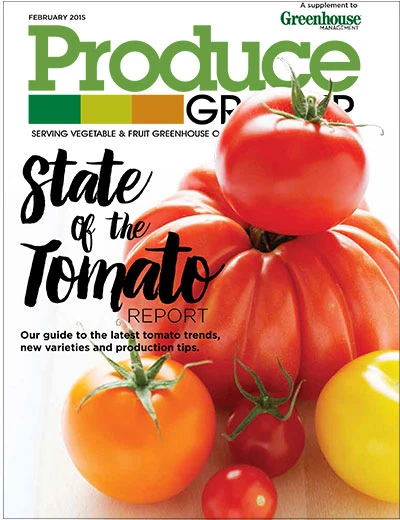
 Maintaining a clean, perfect water supply is difficult for any grower. Testing equipment can quickly tell you what your pH and electrical conductivity (EC) are, but you may still be battling water-based plant deficiencies. What’s the problem?
Maintaining a clean, perfect water supply is difficult for any grower. Testing equipment can quickly tell you what your pH and electrical conductivity (EC) are, but you may still be battling water-based plant deficiencies. What’s the problem?
Michael Bogolawski, senior applications engineer and technical services manager for Hanna Instruments, thinks it could be your alkalinity.
He says both alkalinity and pH are crucial. They determine how well a particular plant or crop will absorb the nutrients you’re providing. It’s important that pH is controlled accurately. But there is not necessarily a direct correlation between pH and the alkalinity.
“There is a semi-loose relationship between pH and alkalinity. They do correlate to a degree and they follow each other but you could have a completely different alkalinity at 7.5 pH for one water source than you would for another water source. So I could have water source A at 7.5 PH with an alkalinity of 120. I could have water source B at 7.5 pH with an alkalinity of 240 or even higher, it’s possible,” Bogolawski says.
He adds that the perfect alkalinity for most species of plants is between 70 and about 120 parts per million as calcium carbonate. “I’ve seen waters as high as 8 with a perfect alkalinity of 90 to about 120. But the growers still want to acidify and bring it down to 5.8 pH because they think that’s where they need to be. But they’re pretty much home and may need only a minor adjustment, even though their pH is on the high side,” Bogolawski says.
The other problem that poses is if you try to acidify with a low buffering capacity of 90 or 100, you’re going to have a hard time adding acid and controlling it effectively.
“As soon as you add a drop of acid the entire pH will drop, pretty much to the pH of that acid — because there’s no buffering capacity, there’s no alkalinity to resist the acid you’re adding. So it makes controlling very difficult when it’s in that range. You could have a perfect alkalinity with a higher pH in certain cases. It doesn’t happen often, but it does happen,” Bogolawski says.
If you have a consistent water source, you don’t have to test the alkalinity often. Bogolawski suggests testing once a month or so. If you have a surface or even municipal supply source, check the alkalinity at least once a month, because the water quality can fluctuate more wildly as a result of various natural activities or human intervention.
To test the alkalinity, Bogolawski says growers should employ the help of a mini-titrator or titration kit. He says there are systems available to growers that will automatically test the alkalinity of their water, but those systems are often extremely expensive. Mini-Titrators or Titration kits, which are handheld and relatively affordable in comparison, will do the job just as effectively and are widely available.
The digital revolution
One of the major developments over the last 20 years in greenhouse technology has been the remote control offered on laptops, cell phones and tablets. Growers can now leave the greenhouse and get notifications on their devices, alerting them to potentially hazardous developments in growing conditions.
“We work with a Hawaiian greenhouse grower that produces tomatoes. That grower has specific programs in place using our Fertigation system that will automate when water is introduced to the crop, what fertilizer concentrations are used for certain zones, and the system will consider specific times and specific growth phases. The beauty of using an EC-driven Fertigation system that’s fully programmable is that you can set up recipes. You can also set up programs that will activate at certain times of the day or activate under certain conditions,” Bogolawski says.
 he improvements in automation offer a similar improvement in quality of life. Bogolawski notes that growers no longer need to spend 12 or 15 hours in their greenhouse. Now they can use advanced monitoring systems that will alert them to any potential danger and can then correct the problems remotely. Those systems can tell growers that their pH is off or their EC is tilting the wrong direction. It can also track nutrient use within the water.
he improvements in automation offer a similar improvement in quality of life. Bogolawski notes that growers no longer need to spend 12 or 15 hours in their greenhouse. Now they can use advanced monitoring systems that will alert them to any potential danger and can then correct the problems remotely. Those systems can tell growers that their pH is off or their EC is tilting the wrong direction. It can also track nutrient use within the water.
“You want to be able to walk up to the system and say, ‘You know what? The leaves of my plants are a little yellow today, so I'm going to hit a button and I'm going to adjust my iron from 5 percent to 8 percent," he says. "Or you could do it remotely through application software from a computer, cell phone or tablet 10 miles or a thousands of miles away."

Explore the February 2015 Issue
Check out more from this issue and find your next story to read.
Latest from Produce Grower
- Your comprehensive guide to Indoor Ag-Con ’25
- Sollum Technologies and Indoor Ag-Con announce recipients of Sollum Student Scholarship
- 80 Acres Farms expands to Georgia, Texas and Colorado
- This fast and agile robotic insect could someday aid in mechanical pollination
- AmericanHort urges exclusion of sphagnum peat moss from proposed Canadian tariff
- The Growth Industry Episode 2: Emily Showalter on how Willoway Nurseries transformed its business
- Moleaer expands irrigation product line featuring nanobubble technology
- Eden Green Technology CEO Eddy Badrina reflects on challenges, opportunities for CEA





